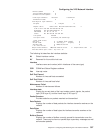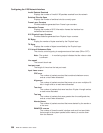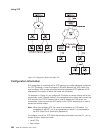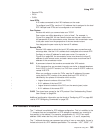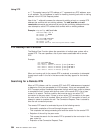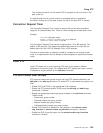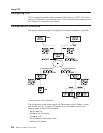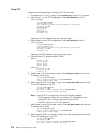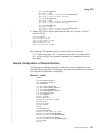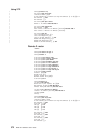
This causes the search for the remote DTE to proceed to the next router in the
peer router list.
If a pass through the list of peer routers is completed without a successful
connection through any of the peer routers, the call to the local DTE is cleared.
Connection Request Timer
The Connection Request Timer is used to ensure that no call setup procedure
hangs for an indeterminable time. There is a timer configured for each peer router.
Example:
XTP config>add peer-router
Router's internal IP Address [0.0.0.0]?10.0.0.2
Connection setup timeout [230]?60
The Connection Request Timer can be configured from 10 to 480 seconds. The
default is 230 seconds. This default was determined based on the fact that the
default setting for the X.25 Call Request Timer is 200 seconds.
The timer is started when an attempt is made to complete a call through a peer
router. It is stopped when the call attempt is either accepted or rejected by the peer
router.
Local XTP
Local XTP allows you to route incoming X.25 traffic to the same or different
interfaces on the current router. To configure local XTP, specify the router’s internal
IP address as a peer address on the add peer command.
XTP and Closed User Groups
XTP supports closed user groups through the local DTE address defined by the
add local or the add cug command. To enable XTP to use closed user groups, you
must:
v Enable CUG or BI-CUG on the appropriate X.25 interfaces.
v Supply the XTP protocol-specific CUGs using the add cug and add bi-cug
commands, if desired.
v Supply the appropriate closed user group numbers in the add local command.
These include:
– Closed user group number
– Preferred closed user group number
– Bilateral closed user group number
– Preferred bilateral closed user group number
v Enable CUG insertion or deletion for the interface in the national enable
cug_insertion or national enable cug_deletion commands, if desired.
v Enable the CUG 0 override option on the national enable cug 0 override
command, if desired.
Using XTP
Chapter 28. Using XTP 365



